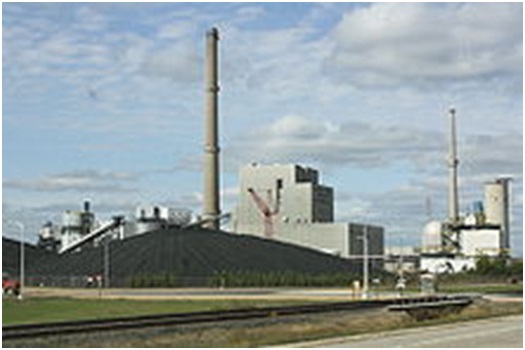Part Three of Three Parts (Please read Part One and Part Two first)
The Elk River reactor was made from prefabricated modules and shipped to the operational site on flat railroad cars. The design was a variation on the boiling water reactors which are the second most common type in use today. The fuel was a non-standard type thought. It consisted of a mixture of uranium that was more highly enriched than usual and the element thorium. The thorium was included because of concerns that uranium resources might run out in the near future. There are still supporters of the idea of using thorium as the primary nuclear fuel for future reactors.
The reactor was almost four years behind schedule when it went operational in 1964 and the cost had risen from about six million to sixteen million dollars. The Elk River reactor only operated for three and one half years. Cracks in the cooling system pipes forced the shutdown of the reactor in 1968. Rejecting proposed repairs that would have cost over a million dollars, the operators remarked that the reactor was too small to be economical and the electricity cost twice that of electricity generate by a coal-fired power plant. New technology had to be invented to decommission the reactor and the cost of decommissioning was six million dollars.
Also in 1968, the La Crosse fifty megawatt boiling water reactor, the last of the AEC funded reactors, was connected to the grid. It operated for eighteen years and, at the end of its life, the electricity that it generated cost three times that of a nearby coal-fired power plant. Since the La Crosse reactor was built and turned on, not a single small nuclear power reactors has been ordered to generate power in the U.S. By the mid 1970s, large reactors generating between eight hundred megawatts and thirteen hundred megawatts were being built.
Other countries built small reactors but they were mostly intended as intermediate steps in the development of large reactors. India was still building two hundred megawatt reactors until recently. These reactors were similar to the SMRs being promoted today. They were manufactured according to a "relatively" standardized design and operated by single utilities. Ultimately India decided to build bigger reactors in the seven hundred megawatt range.
One major difference between the U.S. nuclear power reactors and the reactors in use in other countries is the fact that the U.S. reactors are owned and operated by utility companies where most other countries have reactors operated by an agency of their central governments. Utilities have to operate with tighter budgets and competition from other types of power generation as opposed to government monopolies. Small reactor development outside the U.S. is primarily aimed at the export market.
Despite the poor record of small reactors in the U.S. during the 1960s, the nuclear industry resurrected the small reactor concept in the 1980s because of cost overruns and scheduling delays in the construction of large reactors in the previous decade. An article was published in the journal Energy in 1983 by an analyst that proposed, "A novel, factory-based approach to manufacturing reactors under 400-MWe size may alleviate many of the pragmatic constraints on nuclear business," and the author suggested that "prefabrication and standardization of major plant components could lower dollar-per-kilowatt capital costs to levels now boasted by 1,000-MW models." He went on to say that the proposed SMRs could also reduce regulations, shorten construction schedules and avoid quality control problems with components. Unfortunately, the market found the new reactors proposals too expensive and they were never built.
And now, in the Twenty First Century, the idea of cheap, safe, small modular reactors has been resurrected once again. Sadly, the record of history is clear. SMRs are too expensive because of design and construction problems and small electrical capacities. In 1966, an analyst from General Electric said that " Nuclear power is a big-plant business: it is most competitive in the large plant sizes.” Today, large nuclear reactors are pricing themselves out of the electricity market. If they cannot compete, it is almost certain that the proposed SMRs will be able to compete either.
La Cross Reactor:
